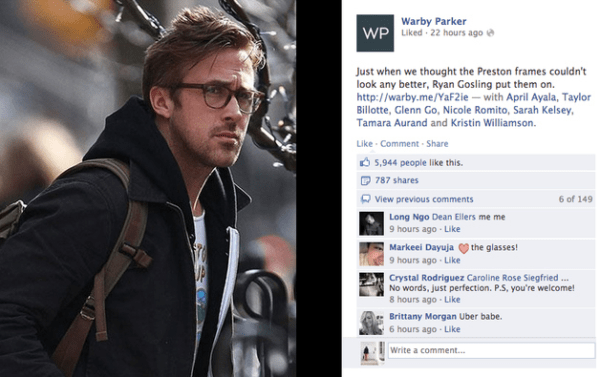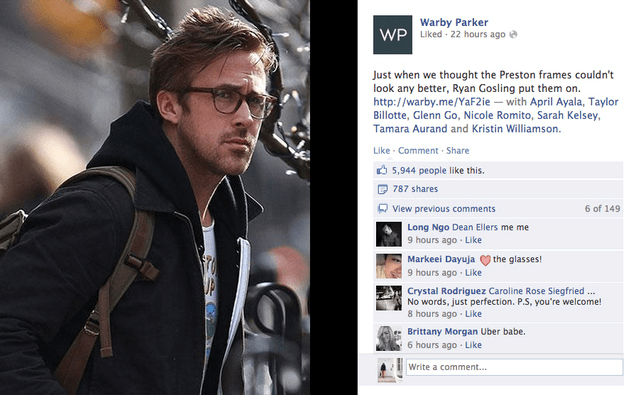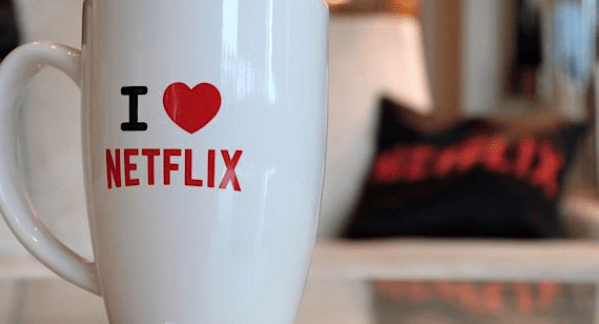
If you’ve found yourself dreaming of gazing into Ryan Gosling’s beautiful eyes (and really, who hasn’t?), you’ll likely have to do it through his Warby Parker glasses. Warby Parker, the latest “IT” eyeglass brand, has perched its affordable yet fashion-forward specs on the noses of hipsters, value seekers and celebrities alike.
However, success didn’t happen overnight. How did Warby Parker transform from being a Wharton MBA class project to being named Fast Company’s #1 Most Innovative companies of 2015, usurping perennial favorites Google and Apple?
The cofounders of Warby Parker strategically spent money on only three things: 1) building out a website that they hired an external developer for, 2) the original set of inventory, 3) public relations. In Dave Gilboa’s (co-founder of Warby Parker) own words, “and the third was hiring a fashion publicist who was able to get us the meetings with the right people at GQ and Vogue. So we went in to pitch to them and got these great editorial features we really wanted – and a stamp of approval. GQ called us the ‘Netflix of eyewear.’ And we just started getting orders pouring in.” These orders grew so large that they had to create a waitlist functionality within the first day, and ended up having a 20,000 person waitlist that took them nine months to work through.
Besides having an obviously unique product, what did Warby Parker do right in terms of its marketing? Being bootstrapped for cash, they strategically used their marketing dollars for public relations, hiring someone who was able to get them an audience in front of top fashion influencers who loved their eyeglasses. Numbers don’t lie, especially a 20,000 person waitlist of people desperate to get their hands on Warby Parker eyeglasses.
When you’re a brand new startup, and need to get your brand in the eyes and mouths of your niche audience, spend money on public relations. It’ll get you farther than just listing your company and phone number on a blimp or a television spot. Having a great product plus the right marketing strategy equals growth for your startup.
By Courtney Lee


